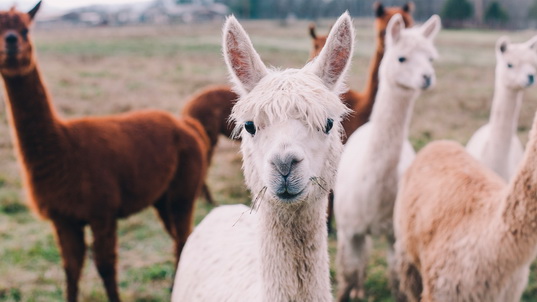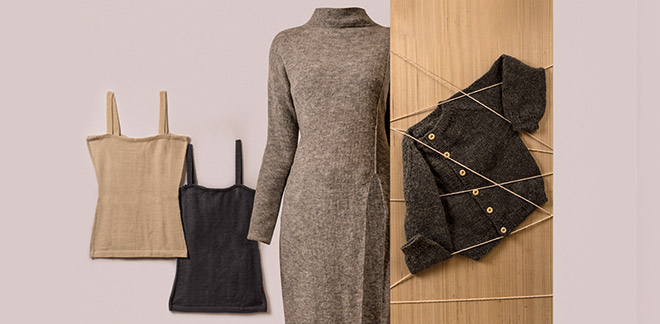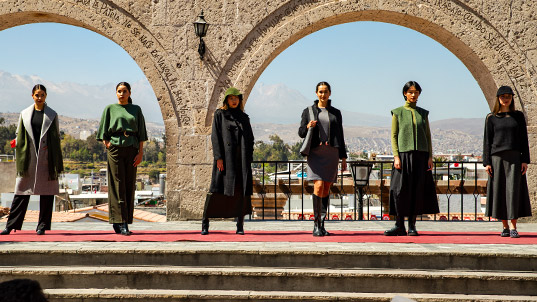Notas
Millennial Legacy
Monday, 20 de July de 2020Alpaca: A fluffy symbol of the Peruvian culture
This camelid has populated the Andes since ancient times and maintains a harmonious relationship with man.
Peruvians love alpacas. Just like most of the world. Paca, the Alpaca, for example, is small and brown, has pointed ears, a long and narrow neck, and, above all, a soft, cottony fur, like a moving pillow.
The alpaca is believed to have descended from the vicuña (a noble relative that adorns The National Coat of Arms) whose ancestors migrated to South America 3 million years ago. Since pre-Hispanic times, Peruvians have domesticated alpaca and have transformed it into an essential part of the high Andean culture.
For 5,000 years, the master weavers amaze us with their creations, being very careful with the environment and society. Therefore, Peruvians do not like alpacas to go hungry or cold, nor to get sick during frosts.
That is why, in the story “Paca the alpaca and the sheds” (MINAGRI, 2013), Fabio, a boy who lives in the Andes, protects his friend from the snowfall under a huge roof. Furthermore, Paca is vaccinated against diseases and receives the necessary vitamins to have a happy life in the fields.
The fiction, written by Fabio Fernández Rojas, a boy of only 6 years old, represents that friendly relationship that Peruvians strive to maintain with the camelids that populate the highlands.
Meet Paca here.
Docile and majestic
Without a doubt, the sensation of caressing an alpaca is truly pleasant. Alpacas are really docile creatures, in the same way as it is being narrated in the story, and not only with people, but also with nature.
For this reason, the ancient Peruvians, who practiced a religious communion with the Inti, the Apus (mountains), the land and its gifts, domesticated the alpaca and took advantage of its fleece without hurting this loveky creature. The alpaca fiber was highly appreciated by the Incas, that it was reserved for the imperial class, with absolute respect for the animal.
And this is how it is done now.
PROMPERÚ is a friend of the alpaca, since it promotes not only its responsible conservation, but also the use of its fiber, the same that has become, today, a flagship export product.
Value chain
In the novel “Aves sin nido” (1889), Cusco writer Clorinda Matto de Turner already recognized alpaca fiber as an opportunity for progress for Peruvians, mentioning that the trade in this product was “the main source of wealth” for the provinces.
Currently, the textile industry is a source of work for more than 120 thousand Peruvian families. Alpaca fiber is part of an ancient legacy that cannot be ignored. Not even in times of pandemic, when business relationships travel the electronic thread.
PROMPERÚ today promotes the commercialization of this important industry input through the Alpaca sector brand of Peru, as part of a value chain that begins with raising and caring for the animal, continues with the weaving of the garments and ends on the world's most important walkways and showcases.
As is known, Peru concentrates approximately 80% of the world production of alpaca fiber. The main regions that provide this input are Puno, Cusco, Arequipa, Huancavelica, Apurímac, Ayacucho and Pasco.
A commitment to development
That is why the Peruvian Government insists on moving towards sustainability through an activity that is respectful of the environment and that prioritizes the protection of workers and animal welfare.
The markets of the world know this. So they ask for Peruvian alpaca.
According to the Exporters Association, in 2019 alone, the total export of alpaca fiber reached US $ 57 million 483 thousand. The fabric reached a total of 23 destinations, with the main buyers being Italy and China, which together accounted for 83.5% of the total exported.
Other markets such as Taiwan, South Korea and Japan also lead the demand for alpaca in the world.
There is no doubt that the tradition has dressed in modernity: the alpaca, with its millenary legacy, embraces the entire world with its warm and colorful presence.
Data
There are two breeds and qualities of alpaca: The Huacaya alpaca, known for its voluminous fiber with curly locks and a wide range of natural tones. And the Suri alpaca, recognized for its longer fiber, like hanging wicks, straight, silky and more elastic.
By Ministerial Resolution No. 429-2012-AG, the Ministry of Agriculture established August 1 as National Alpaca Day.

.jpg)

